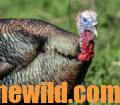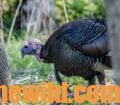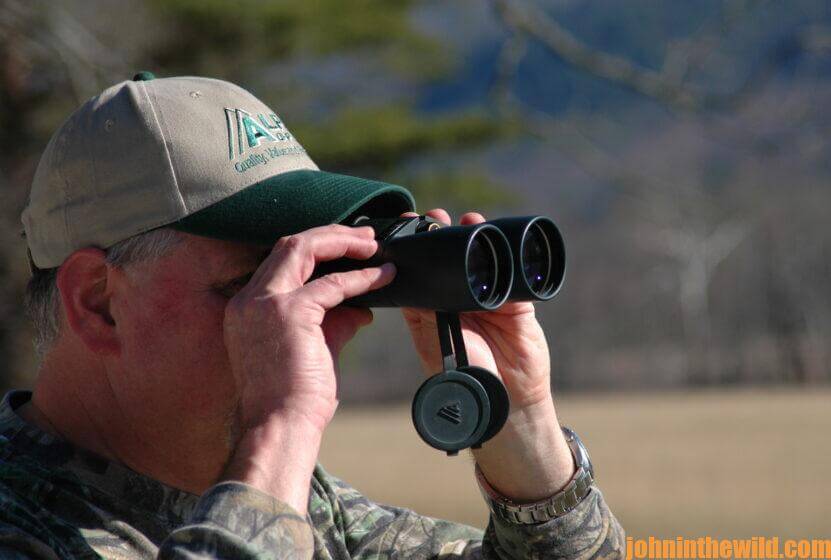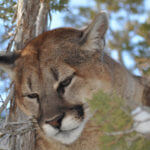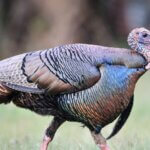Editor’s Note: One of the nation’s leading turkey callers and hunters for four decades, Chris Parrish of Centralia, Missouri, has won 10 World Turkey Calling Championships and 11 Grand National Turkey Calling Championships. Parrish spends thousands of hours in the woods before, during and after turkey season listening to, observing and taking notes on the social behavior of turkeys. As a longtime student of the wild turkey gobbler, Parrish shares 12 secrets the next three days to help you take more gobblers this season.
 1) Take Time to Scout: Most hunters show-up the day before turkey season opens ready to hit the woods. They may have a general idea of where the turkeys are holding, but they haven’t found or patterned individual gobblers. To take more turkeys this season, get into the woods a week or two before the season opens. Try and find as many gobbling turkeys as you can and learn where they:
1) Take Time to Scout: Most hunters show-up the day before turkey season opens ready to hit the woods. They may have a general idea of where the turkeys are holding, but they haven’t found or patterned individual gobblers. To take more turkeys this season, get into the woods a week or two before the season opens. Try and find as many gobbling turkeys as you can and learn where they:
- roost;
- go after they roost;
- strut;
- feed; and
- walk to return to their roosts.
When you have this information on several gobblers on your property, then regardless of what happens, you can go to and meet different turkeys throughout the day.
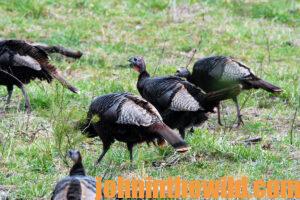 2) Scout the Hens: During the spring gobbling season, the hens will dictate almost every move the gobbler makes. Find the hens to locate the gobblers. I try to learn the movement patterns of the hens – where the hens feed, where they nest, and what times they usually go to these two sites. With this information, you can go to where the hens are and probably expect to meet a gobbler there. Although a gobbler may not follow a hen into the nesting cover, he’ll remain close to her. Patterning hens in the spring works like patterning does in the fall. Like the bucks remain near the does during the rut, the gobblers will stay close to the hens in the spring.
2) Scout the Hens: During the spring gobbling season, the hens will dictate almost every move the gobbler makes. Find the hens to locate the gobblers. I try to learn the movement patterns of the hens – where the hens feed, where they nest, and what times they usually go to these two sites. With this information, you can go to where the hens are and probably expect to meet a gobbler there. Although a gobbler may not follow a hen into the nesting cover, he’ll remain close to her. Patterning hens in the spring works like patterning does in the fall. Like the bucks remain near the does during the rut, the gobblers will stay close to the hens in the spring.
3) Roost Your Gobbler: I like to roost a turkey in the afternoon to get-in close and attempt to call him off the roost the next morning. However, often you won’t take a gobbler right off the roost. Therefore, always have an alternate plan of attack to use, if you don’t get a gobbler to come to you when he flies-off the roost. If you’ve done a good job of scouting, you’ll know where the tom will go when he leaves the roost. Get to where he wants to go before he does, and you’ll have another opportunity to bag a bird.
 4) Call Less: Less calling usually works better than more calling, especially in Alabama where dedicated sportsmen have chased turkeys for more than 100 years. Call like the hens you hear calling in your area. Generally, hens don’t call aggressively. In many situations, less calling and softer calling than what most hunters usually use will work more effectively. However, if the hens in your area call aggressively, then you too can call aggressively. I believe 98 percent of the turkey hunters in the United States call too much and call too loudly, spooking more turkeys than they take.
4) Call Less: Less calling usually works better than more calling, especially in Alabama where dedicated sportsmen have chased turkeys for more than 100 years. Call like the hens you hear calling in your area. Generally, hens don’t call aggressively. In many situations, less calling and softer calling than what most hunters usually use will work more effectively. However, if the hens in your area call aggressively, then you too can call aggressively. I believe 98 percent of the turkey hunters in the United States call too much and call too loudly, spooking more turkeys than they take.
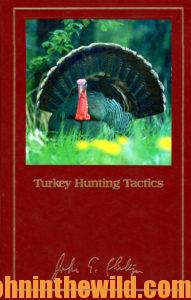 To learn more about hunting turkeys successfully, visit John E. Phillips’ Amazon book page at https://www.amazon.com/John-E.-Phillips/e/B001HP7K6O. For even more information from many of the top turkey hunters and callers, go to the book, “Turkey Hunting Tactics,” https://www.amazon.com/gp/product/B007PK9B2G/ref=dbs_a_def_rwt_hsch_vapi_taft_p2_i3,
To learn more about hunting turkeys successfully, visit John E. Phillips’ Amazon book page at https://www.amazon.com/John-E.-Phillips/e/B001HP7K6O. For even more information from many of the top turkey hunters and callers, go to the book, “Turkey Hunting Tactics,” https://www.amazon.com/gp/product/B007PK9B2G/ref=dbs_a_def_rwt_hsch_vapi_taft_p2_i3,
available in Kindle, print and Audible. You may have to copy and paste this link into your browser. (When you click on the book, notice on the left where Amazon says you can read and hear 10% of the book for free). On the right side of the page and below the offer for a free Audible trial, you can click on Buy the Audible book.
Tomorrow: Four More Secrets to Take Turkeys

